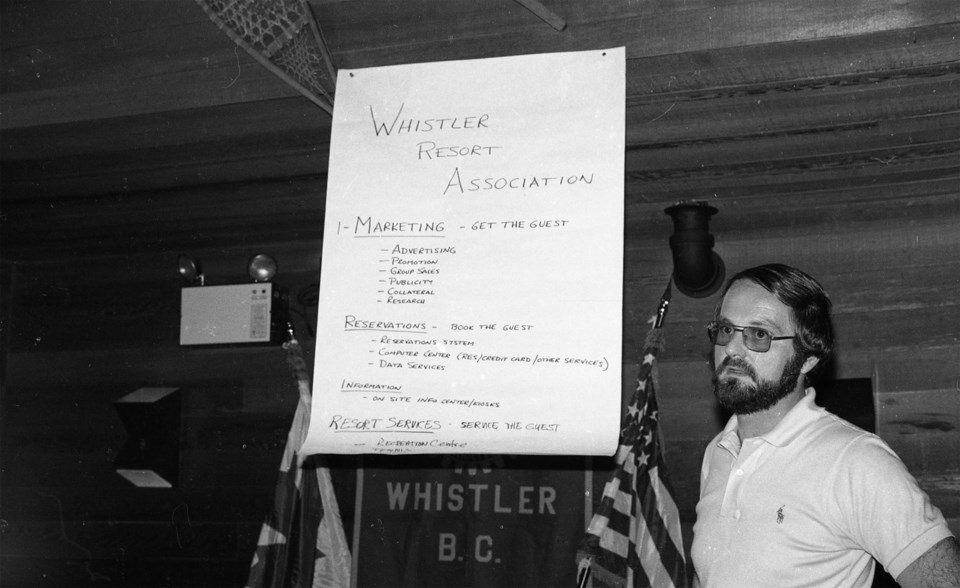What is the WRA?
By Allyn Pringle
In late August 1979, the government of British Columbia introduced an amendment to the Resort Municipality of Whistler Act (the legislation that established Whistler as a municipality in 1975) that would allow for the creation of a resort association. According to Section 14.1 of the Act, the purpose of such an association would be “to promote, facilitate and encourage the development, maintenance and operation of the resort land.” Thanks to this legislation, the Whistler Resort Association (WRA) began operations in 1980.
There were no other resort associations in British Columbia at the time, though several examples could be found in American resorts such as Sun Valley, Aspen, and Vail. In its Oct. 1979 newsletter, the Whistler Village Land Company (WVLC) wrote that: “The concept of a destination resort and of a resort association are both new to Canada, and that is perhaps why some misunderstandings have arisen.” Though they did not detail what kind of misunderstandings had occurred, the WVLC did go on to provide an explanation of the purpose and structure of the WRA.
The WVLC stated that the main purpose of the WRA was, “to ensure the success of Whistler,” mainly through marketing. Marketing Whistler included promoting and advertising the resort, providing public relations, and making reservations. WRA operations would include a computerized, central-reservation system able to book rooms for large groups such as conferences, a service to handle general inquiries about Whistler, and a central-billing system. The WRA would also be able to sponsor events in Whistler, such as concerts and festivals.
The membership of the WRA was to include those who owned or operated in the (still under construction) Town Centre and the Blackcomb benchlands, as well as anyone owning or operating a tourism-related business outside of the “resort land” who chose to join. According to Land Company President Terry Minger, the WRA would function not unlike a shopping centre-merchants’ association or a tenants’ organization.
For the first few years, the WRA was expected to be funded mainly by the WVLC and contributions from the operators of Whistler Mountain and Blackcomb Mountain, organizations that would also make up the majority of the board positions. The proposed budget for its first year of operations was set at $500,000.
Though some had expected the WRA to begin operating as early as late 1979, its bylaws first had to be approved by the provincial government. In March 1980, the Whistler council voted to receive the new Resort Association Bylaws. By May 1980, all that the Whistler Question had to report was that no statement had been issued by the WVLC, the municipal council, or the province regarding the passage of the bylaws. Finally, by July 1980, the bylaws of the WRA had been approved and the association could move forward.
The WRA quickly got to work hiring staff, such as its first executive director Karl Crosby, setting up systems, and marketing the resort of Whistler to the world. There were some challenges in the early years, such as a recession, continued construction, competing demands of members, and various changes in management (past general manager Peter Alder once said that the WRA “went through managers like they went through coffees in the morning”), but the WRA remained a visible force promoting Whistler. It set up information booths at travel displays outside Whistler, coordinated visits for tour operators and conference organizers to show what Whistler was capable of, produced maps and directional signs in the valley, helped sponsor events such the Fall Festival, Winterfest, and the first street entertainment program, and in 1981 introduced Whistler’s first mascot, a marmot named Willie Whistler. By 1986, membership of the WRA had grown to more than 600 entities.
The WRA continues to operate in Whistler, promoting Whistler as a destination resort, operating a computerized central reservation system, and more, though today the organization is much better known as Tourism Whistler.





